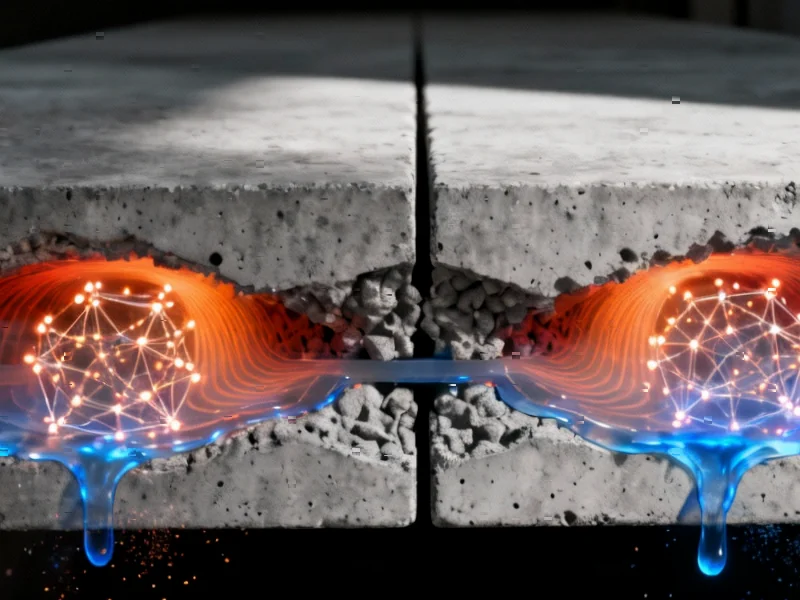The New Frontier in Thermal Management
In the rapidly evolving field of thermal engineering, researchers are turning to nanotechnology to solve complex heat transfer challenges. A groundbreaking study published in Scientific Reports reveals how single-walled carbon nanotubes (SWCNTs) suspended in a 50:50 ethylene glycol-water mixture are creating unprecedented opportunities for thermal management systems. This research represents a significant leap forward in our understanding of how nanomaterial characteristics influence thermal conductivity and entropy generation in fluid systems.
Table of Contents
- The New Frontier in Thermal Management
- Understanding the Nanofluid Advantage
- The Yamada-Ota Model: A Game-Changing Approach
- Key Findings: Beyond Conventional Thermal Systems
- Practical Applications Across Industries
- The Computational Breakthrough
- Future Directions and Research Opportunities
- Why This Matters for Sustainable Technology
Understanding the Nanofluid Advantage
Nanofluids represent a sophisticated class of engineered fluids where nanoparticles are suspended in traditional base fluids. These aren’t simple mixtures—they’re carefully engineered systems where the addition of nanoparticles like SWCNTs dramatically enhances thermal conductivity, electrical conductivity, and heat capacity while maintaining manageable viscosity levels. The unique structure of carbon nanotubes, particularly their high aspect ratio and exceptional thermal properties, makes them ideal candidates for thermal applications ranging from industrial cooling systems to advanced energy storage solutions., according to recent research
The Yamada-Ota Model: A Game-Changing Approach
What sets this research apart is the application of the Yamada-Ota model, which specifically accounts for the length and diameter factors of carbon nanotubes—parameters that previous models often overlooked. This sophisticated mathematical framework allows researchers to predict how structural variations in nanomaterials affect overall system performance. The model demonstrates that these dimensional characteristics play a crucial role in determining how efficiently heat transfers through the nanofluid and how much entropy generates during the process.
Key Findings: Beyond Conventional Thermal Systems
The study reveals several critical insights that could transform thermal engineering applications. When subjected to magnetic fields through the Riga wedge configuration, the SWCNT-based nanofluid demonstrated remarkable thermal regulation capabilities. Mixed convection effects helped reduce temperature in specific scenarios, making the system particularly valuable for engineering applications requiring precise thermal control. Meanwhile, radiation effects and convective heat conditions significantly increased temperature profiles, especially near surfaces, opening new possibilities for targeted heating applications.
Perhaps most importantly, the research quantified how different parameters affect system efficiency. The Brinkman number and Biot number were found to increase entropy generation, while radiation effects and angle variations showed the opposite trend. The Eckert number maintained systems at high entropy levels, providing engineers with crucial knobs to tune for optimal performance.
Practical Applications Across Industries
The implications of this research extend far beyond laboratory settings. Several industries stand to benefit significantly:, as comprehensive coverage
- Energy Sector: Improved heat transfer efficiency could enhance solar collector performance and energy storage systems
- Manufacturing: More effective cooling systems for high-temperature industrial processes
- Electronics: Advanced thermal management for high-density electronic components
- Construction: Enhanced heating and cooling systems for buildings
- Automotive: More efficient engine cooling and climate control systems
The Computational Breakthrough
This research employed sophisticated numerical methods, particularly the bvp4c scheme, to solve the complex mathematical models describing heat and entropy transfer. This computational approach allowed researchers to simulate multiple scenarios and parameter ranges, providing a comprehensive understanding of how the system behaves under various conditions. The ability to accurately model these complex interactions represents a significant advancement in predictive capabilities for thermal system design.
Future Directions and Research Opportunities
While this study marks a substantial advancement, it also opens numerous avenues for future research. The combination of SWCNTs with different base fluids, the exploration of hybrid nanomaterials combining single and multi-walled carbon nanotubes, and the investigation of various geometric configurations all present exciting opportunities. Additionally, scaling these laboratory findings to industrial applications will require further study into long-term stability, cost-effectiveness, and manufacturing considerations.
Why This Matters for Sustainable Technology
As global energy demands continue to rise and environmental concerns become increasingly pressing, technologies that improve thermal efficiency represent crucial steps toward sustainability. Nanofluids enhanced with carbon nanotubes offer the potential to reduce energy consumption across multiple sectors while maintaining or even improving performance. This research not only advances our fundamental understanding of heat transfer mechanisms but also provides practical pathways toward more efficient and sustainable thermal management solutions.
The integration of sophisticated mathematical modeling with cutting-edge nanomaterials represents a powerful combination that could redefine how we approach thermal challenges in the coming decades. As research continues to refine our understanding of these complex systems, we move closer to realizing the full potential of nanotechnology in thermal applications.
Related Articles You May Find Interesting
- ChatGPT Atlas Security Flaws Expose Users to Data Theft and Malware Through AI M
- Musk’s Trillion-Dollar Gambit: Securing Influence Over Tesla’s Future Robotics
- Musk Seeks Trillion-Dollar Compensation to Maintain Influence Over Tesla’s Futur
- Galactic Origins Shape Rocky Exoplanet Composition, New Research Reveals
- Accidental Leadership Epidemic: Facebook Co-founder Reveals CEO Burnout as Study
This article aggregates information from publicly available sources. All trademarks and copyrights belong to their respective owners.
Note: Featured image is for illustrative purposes only and does not represent any specific product, service, or entity mentioned in this article.

